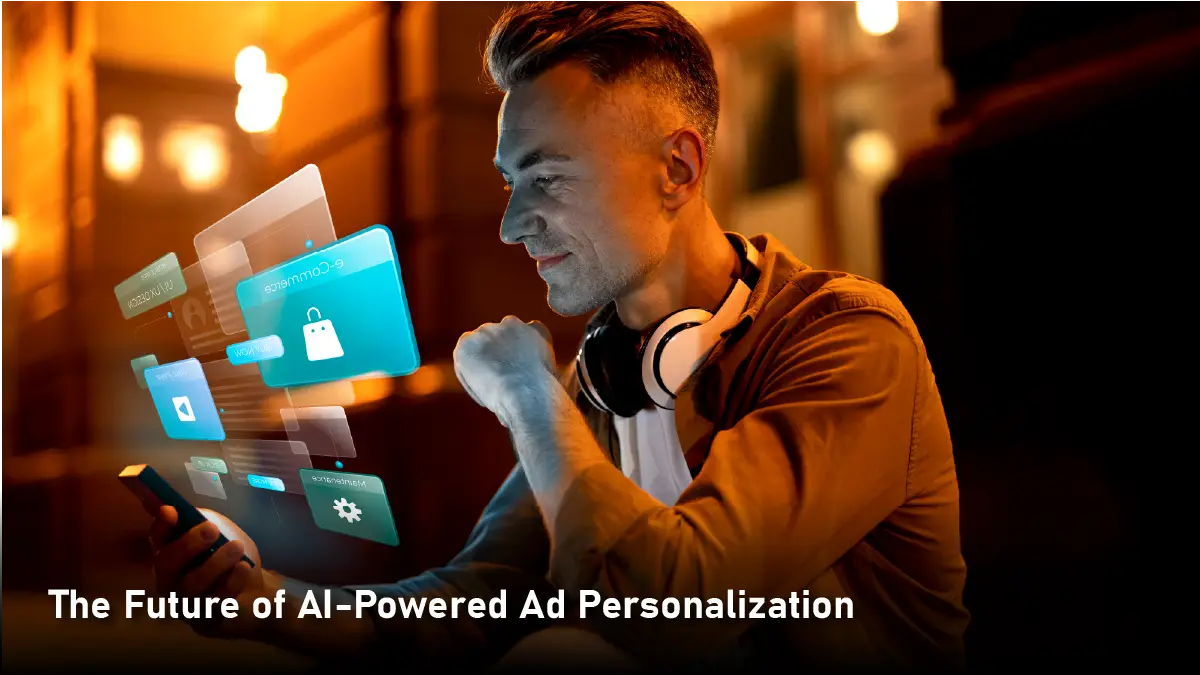In a time when consumers face a flood of digital content, personalized ads give a strong edge. Brands using artificial intelligence (AI) for personalized ads are seeing better results. They enjoy higher engagement, more conversions, and stronger brand loyalty. Real-time ad personalization isn’t just a dream anymore. It’s a must-have strategy. The top AI tools are driving this change.
Why Real-Time Ad Personalization Matters More Than Ever
Today’s digital landscape is driven by instant gratification. Consumers expect interactions that are not only relevant but timely and contextually aware. McKinsey says 71% of consumers expect companies to deliver personalized interactions, and 76% get frustrated when this doesn’t happen. AI boosts ad personalization, leading to great results. You get smarter targeting, less wasted ad spends, and a better customer journey.
AI helps marketers analyze data like never before. It offers insights from user behavior, purchase history, location, device type, and feelings. Real-time personalization means ads change instantly when a user interacts with a website, app, or digital platform. It shows messages that are most likely to connect with the user at that moment.
What Makes a Great AI Tool for Real-Time Ad Personalization

A standout AI advertising tool combines automation with precision. It can take in data from different channels. It identifies what users want and quickly delivers the right content.
These platforms often use:
- Customer data platforms (CDPs)
- Demand-side platforms (DSPs)
- Analytics tools
This helps build a smooth advertising system. Key features include predictive modeling, natural language processing, adaptive learning, and cross-channel orchestration.
Also Read: The Power of Behavioral Targeting: Precision Through Past Actions
But what sets the best apart is their ability to act, not just analyze. They turn passive data into real-time insights. This helps campaigns adjust based on small shifts in consumer behavior. These tools lead the way in innovation. Global brands trust them to boost their advertising strategies.
1. Adobe Sensei: The AI Power Behind Creative Intelligence
Adobe Sensei is Adobe’s AI and machine learning framework. It is built into the Experience Cloud. What sets Adobe Sensei apart is its ability to blend data, content, and creativity at scale. It uses AI to improve media buying. It personalizes ad content based on user signals. These signals include browsing history, engagement rate, and demographic info.
Its real-time decision engine keeps ads relevant everywhere. This includes social media feeds and display banners. A travel company can quickly change ads. It can show beach getaways to a user in Miami. Meanwhile, it can display ski resort deals to someone in Denver. The easy link with Adobe Target and Adobe Audience Manager makes it strong for marketers. They want to blend personalization across different channels.
2. Google Marketing Platform: AI at the Core of Programmatic Precision
Google’s advertising tools have changed a lot due to AI. This includes Display & Video 360 and Google Ads. It uses machine learning to improve bidding strategies. It finds audience segments. Then, it shows personalized ads on Google and other platforms.
With Google’s AI, advertisers can quickly test many ad variations. They can choose the best combinations based on real-time user feedback. An e-commerce brand can display different product images and calls-to-action. This depends on whether the user is a returning customer or a first-time visitor. Google’s solution is essential for real-time campaigns. It can scale ad relevance across millions of impressions every second.
3. Persado: Language Optimization Meets Emotional AI
Persado stands out by diving into the language layer. Many platforms focus on visuals and targeting, but Persado goes further. This AI platform uses natural language generation (NLG) and emotional intelligence. It creates personalized ad copy that connects emotionally with different audience groups.
Persado’s AI looks at a brand’s past messaging and user engagement. Then, it suggests different headlines, CTAs, and body text. These recommendations aim to resonate with various personas and boost performance. Persado’s linguistic intelligence delivers impressive results. Brands using it have seen conversions rise by as much as 41%. A fintech company might use Persado to change ad language. It can highlight ‘security,’ ‘freedom,’ or ‘simplicity’ based on the user’s behavior.
4. Dynamic Yield: Personalization Engine for Omnichannel Journeys
Dynamic Yield, now with Mastercard, is an AI personalization platform. It creates smooth customer experiences on websites, mobile apps, emails, and in-store screens. Its machine learning models constantly check how visitors act. This helps them show dynamic content, promotions, and product recommendations right away.
What makes Dynamic Yield especially effective for advertisers is its adaptive segmentation engine. It doesn’t just use set customer groups. It uses predictive algorithms to create micro-segments right away. A retail brand can show flash sale ads to price-sensitive users. At the same time, it can offer rewards to loyal, high-value customers. It does all this in just milliseconds after the page loads.
5. Albert.ai: Autonomous AI Marketing That Learns and Adapts
Albert is an AI marketing platform. It runs complex ad campaigns across many channels. Human input is minimal. It analyzes campaign performance and audience interactions. Then, it adjusts targeting, messaging, budget, and creative delivery on its own.
What’s particularly unique about Albert is its ability to self-learn and scale. It can run many micro-campaigns at the same time. It tests different ideas and improves performance automatically. Harley-Davidson and other brands have seen big jumps in lead generation and digital ROI. This happened after they used Albert’s AI. Its hands-free model is great for small marketing teams. They can boost ad efficiency while keeping personalization.
6. Meta Advantage+: Hyper-Personalized Ad Automation on Facebook and Instagram
Meta’s AI ad solution, Advantage+, helps performance advertisers on Facebook and Instagram. It customizes creatives, placements, and messaging automatically. It uses user interaction data and campaign goals. This tool is particularly effective for direct-to-consumer brands aiming to scale quickly.
Advantage+ uses AI to find the best mix of creative elements. This includes video thumbnails, ad copy, and CTA buttons. It also adjusts these elements in real time based on where the user is in the purchase funnel. A fashion brand may show different ads to a cart abandoner and a cold lead, even if they are viewing the same collection. This granular personalization boosts return on ad spend and increases audience engagement.
Real-World Results Which Provides Data-Driven Success Stories
The impact of AI tools on real-time ad personalization is not just theoretical. Sephora uses personalization engines. They tailor ad offers based on loyalty status, past purchases, and browsing habits. This data-driven approach has boosted click-through rates and average order values for the brand. Netflix isn’t ad-driven like traditional platforms, but it uses AI for real-time personalization. It picks thumbnail images and video previews based on each user’s viewing history. This shows how powerful relevance can be on a large scale.
A Salesforce report revealed that 84% of consumers believe it’s crucial to be treated as individuals, not just numbers, to gain their business. Real-time AI personalization is more than a tech upgrade. It sets brands apart.
How to Choose the Right AI Tool for Your Advertising Needs
Choosing the right AI tool depends on your goals, team setup, data quality, and marketing tools. Enterprise brands may find Adobe Sensei useful in the Experience Cloud. On the other hand, DTC startups might like the independence of Albert.ai or the speed of Meta Advantage+. A data-rich company wanting to explore language might choose Persado. Focusing on retail and e-commerce can help them reap big rewards from Dynamic Yield’s omnichannel features.
To evaluate, look at the features and how well they work with your current platforms. Also, consider the support level and how fast the tool shows results.
The Future of AI-Powered Ad Personalization

AI is evolving. The future of real-time ad personalization will be smarter and more detailed. New tools, such as generative AI for ads, real-time sentiment analysis, and predictive personalization, will help meet consumer expectations. Brands can respond better by using these tools.
In a digital economy, attention is like currency. AI tools that send the right message at the right time are very valuable. They don’t just help brands keep up with the pace of change; they empower them to lead the way.
Marketers must embrace AI to succeed in today’s personalized digital landscape. It’s the smart, scalable, and sustainable path forward.


Comments are closed.